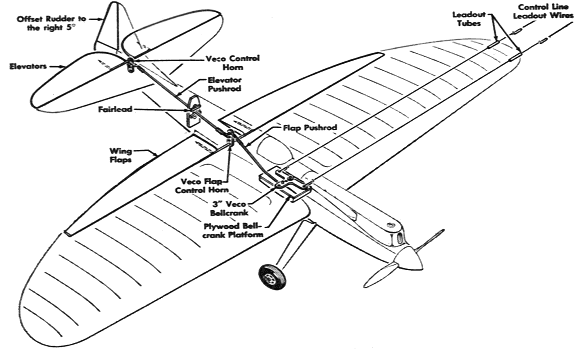|
An explanation of the mechanics of control line and its advantages compared with other kinds of flying model aircraft. A control line model aeroplane is one that is tethered by fine wires or cables (the lines) so that it is forced to fly in a circle, and fitted with elevators that can be moved by a pilot holding a control handle attached to the ends of the lines in the centre of the flying circle. |
|
Variations on this theme providing control by one or three lines also exist, but are nowhere near as common as the two-line form described here:  Diagram adapted from one in the Aeromodeller Data Book published by Model & Allied Publications. Aerobatic models are normally fitted with large wing flaps which move in the opposite direction from elevators. There are a few ways of achieving this, some providing a differential action that applies more flap to the wing nearest the flying circle centre, but a common arrangement is shown in the following diagram:  Diagram from the Control Line Manual by R.G. Moulton, published by Model Aeronautical Press Ltd. The control lines themselves are usually made of a twisted cable about 0.3mm diameter consisting of three or more fine strands of wire soldered together, Cable has a several advantages over piano wire: it is less prone to kinking (hence the trade name Laystrate); its soldered construction protects its steel strands from rusting; and it does not have the tendency for lines to cling together magnetically, occasionally a source of sticky controls when using piano wire. Very small models have also been flown successfully on cotton button thread or carpet thread, but modern threads containing lots of polyester are more flexible and result in rather vague control. Advantages:The factors that led to the popularity of control line for many years are:
|
Similar pages: